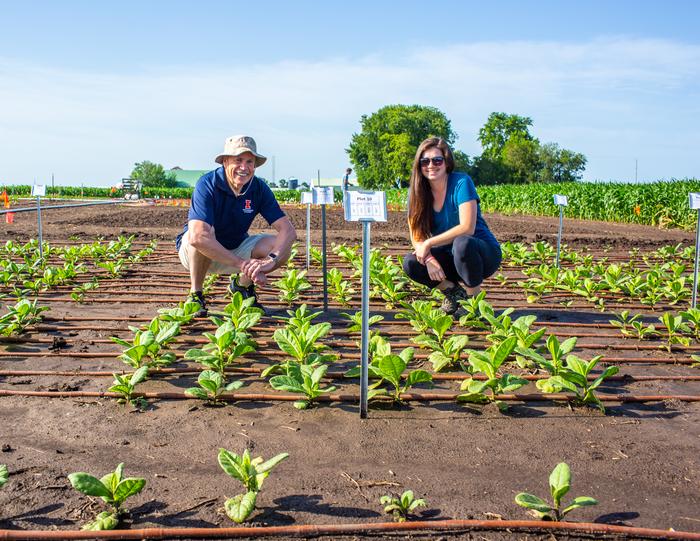Mesophyll conductance, or the ease with which CO2 can diffuse through a leaf’s cells before reaching the location where it undergoes carbon fixation, plays a key role in photosynthesis. CO2 faces barriers as it moves, including cell walls. Now, researchers have increased permeability by reducing the thickness of cell walls, resulting in an increase of CO2 diffusion and uptake of CO2 in a model crop.
This work is published in the Plant Biotechnology Journal in the paper, “Greater mesophyll conductance and leaf photosynthesis in the field through modified cell wall porosity and thickness via AtCGR3 expression in tobacco.” The work was done by researchers from the Realizing Increased Photosynthetic Efficiency (RIPE) program, led by the University of Illinois, who are engineering crops to be more productive by improving photosynthesis, the natural process all plants use to convert sunlight into energy.
“This is one of the few successful tests of concept showing that we can engineer an increase in mesophyll conductance and have it result in increased photosynthesis in the field,” said Coralie Salesse-Smith, PhD, a postdoctoral researcher in the Long Lab at the University of Illinois Urbana-Champaign. “Theory shows us that increasing mesophyll conductance to increase photosynthesis can be achieved without the cost of more water. This is important considering the urgent need for increased crop production and sustainable water use.”
The process of converting CO2 to sugar begins when it passes through the stomata of the leaves. In order for the CO2 to reach the chloroplast (where it is turned into sugar) it must travel through a number of barriers, including the cell wall.
The researchers hypothesized that if they could improve CO2 diffusion across the cell wall by making these barriers easier to cross, it would improve mesophyll conductance and in turn photosynthetic efficiency. Previous studies show that thinner cell walls are associated with higher mesophyll conductance.
The team chose to overexpress CGR3, a gene that has been shown to alter cell wall components. This gene was inserted into a tobacco species and grown alongside wild-type plants in a field trial during the 2022 growing season.
“Targeting the cell wall was very important because it is one of the main components limiting mesophyll conductance. Decreasing its thickness and making it more permeable would make it easier for CO2 to get to the site of carbon fixation,” said Salesse-Smith. “By overexpressing the targeted gene, we were able to decrease cell wall thickness and increase its permeability which, as we hypothesized, did end up increasing mesophyll conductance and, in turn, photosynthesis.”
The plants overexpressing the CGR3 gene showed a decrease in cell wall thickness of 7–13% and an increase in porosity of 75% when compared to the plants without this added gene. In addition, the data showed an 8% increase in photosynthesis in the field.
“We hoped this modification would allow for more CO2 to get into the chloroplast and be used to create energy in the form of sugar, and that is what happened, but just because it worked in a model crop doesn’t mean you get the same results with a food crop,” said Salesse-Smith. “It is important to test what happens in soybean to see if the same improvements in mesophyll conductance and photosynthesis will be achieved, and if that leads to improvements in yield.”
Armed with these results, the team is working to test this modification in soybeans, to see if increased photosynthesis, water use efficiency, and yield can be obtained in a food crop. Soybean field trials could take place as early as the 2025 growing season.


